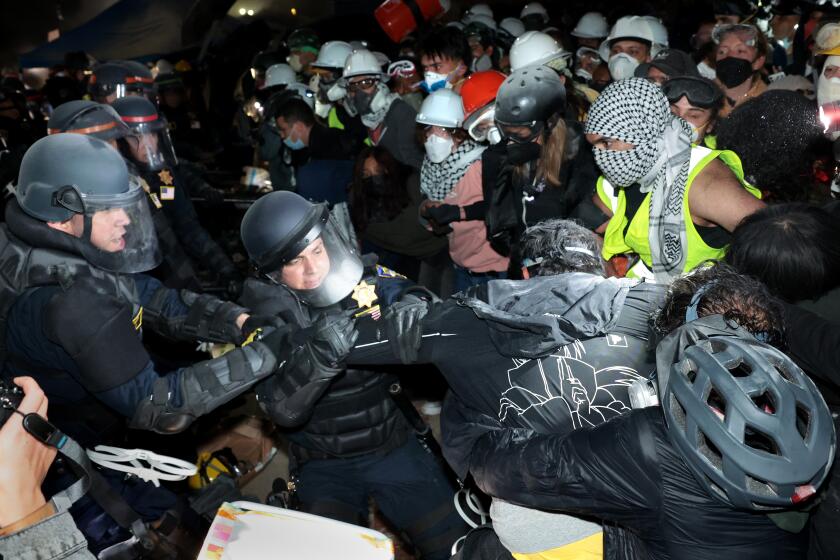Ditch School Bus Computer Routing, Study Says
The San Diego city schools’ new $1.1-million computerized bus-routing system, which left thousands of children stranded waiting for buses in September, should be scrapped in favor of the traditional method of designing bus routes with pins and yarn on school district maps, a school system study recommends.
The report, which the Board of Education will consider Tuesday, suggests trying computerized routing again on a small-scale trial basis to determine if the system can handle the task of organizing bus routes for the 22,000 city school children transported each day.
“The evidence clearly indicates that the district neither achieved the desired and expected benefits nor improved the quality of service and, in fact, experienced a deterioration of service,” the report said. The computerized system was designed by Ecotran Systems Inc. of Cleveland.
In interviews and in the report, the five-person study team bluntly states that the downfall of the two-year effort to computerize the bus-routing system was a combination of a “blind faith in technology,” turf wars between administrators, poor leadership and a lack of communication. Since last fall’s problems, the district has returned to designing bus routes using maps and time schedules.
“There was an assumption that the technology could do what we wanted it to do, and we didn’t test it before we got into it,” said Ruben Carriedo, director of planning for the school system and chairman of the study team.
The report attributes blame for the snafu to everyone from Supt. Thomas W. Payzant to the administrators attempting to implement the system. But Payzant said, “Ultimately, I have to accept responsibility because the buck stops with the person at the top. I don’t think there’s any one individual on the staff who was responsible.”
Payzant said the study team’s analysis will not be used to discipline anyone. He said that he intends to gather school administrators’ responses to the report before recommending whether the computerized routing system should be tried again next year.
The report criticizes Payzant for failing to address concerns brought to him by his top administrators, possibly because project leader Virginia Barnes was issuing positive reports on her group’s progress or because he was committed to making the system work. Barnes refused to comment on the report.
While software problems and the tremendous complexity of the system were the true problems, “the conclusion I drew, in retrospect, was probably the wrong one . . . that what I needed to do was to push people to work a little harder and get their act together,” Payzant said.
The study also notes that:
- School system staff “received very little training on how to operate the system,” and relied on the old, manual system to fix the new, automated one.
- There was no plan for implementing the new system.
- Barnes, the district’s assistant director of transportation, did not explain the plan to the project group and did not react when administrators became frustrated at their inability to implement the system. “A group of very competent individuals encountered great frustration because they were unable to answer such basic questions as: ‘What are we supposed to do? And how are we going to do it,’ ” the report stated.
- Many of Ecotran Systems’ top employees left the firm while the school district was trying to make the routing system work, leaving school administrators without much-needed assistance.
- After weeks of problems with discipline, staffing and absences caused by the routing system, school principals have lost faith in the project. “It will be very difficult to regain their confidence and commitment to continuing the next school year with (the routing system),” the report states.
More to Read
Sign up for Essential California
The most important California stories and recommendations in your inbox every morning.
You may occasionally receive promotional content from the Los Angeles Times.






